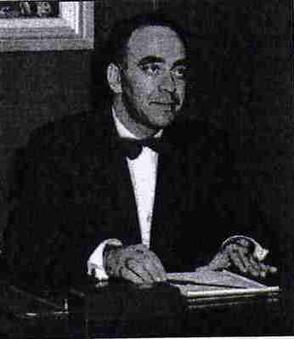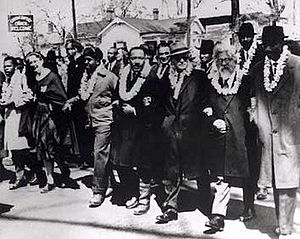Maurice Davis facts for kids
Quick facts for kids Maurice Davis |
|
|---|---|
 |
|
| Religion | Judaism |
| Denomination | Reform |
| Alma mater |
|
| Personal | |
| Born | December 15, 1921 Providence, Rhode Island, United States |
| Died | December 14, 1993 (aged 71) Palm Coast, Florida, United States |
| Spouse | Marion Cronbach |
| Children | 2 children, 6 grandchildren |
| Parents | Jack and Sadie Davis |
| Religious career | |
| Profession | Rabbi |
Maurice Davis (born December 15, 1921 – died December 14, 1993) was an important rabbi and a strong activist. He worked to make things fair for everyone. He was part of the Lyndon B. Johnson Administration and helped lead a group called the International Cultic Studies Association. Rabbi Davis was the main rabbi at the Jewish Community Center in White Plains, New York. He also wrote often for a newspaper called The Jewish Post and Opinion.
Contents
About Maurice Davis's Life
Rabbi Davis married Marion Cronbach. Her father, Abraham Cronbach, was a famous reform rabbi and a pacifist, meaning he believed in peace and avoiding war. He was also one of Rabbi Davis's teachers. Maurice and Marion Davis had two children. Both of their children grew up to become rabbis, just like their father.
Working for Civil Rights
In 1952, Rabbi Davis started a group in Kentucky. This group worked to end segregation, which was when people of different races were kept apart.
In 1965, he walked with Martin Luther King Jr. in Alabama. This was during one of the famous Selma to Montgomery marches. These marches helped bring about important changes for civil rights. After this, President Lyndon B. Johnson asked Rabbi Davis to join a special commission. This commission worked to make sure everyone had an equal chance to get a job.
Helping Families with Cult Concerns
In the 1970s, some young people from Rabbi Davis's community joined a group called the Unification Church of the United States. Rabbi Davis learned about how these groups worked. He wanted to help parents whose children had joined groups they were worried about.
He even helped make a film called You Can Go Home Again. He noticed that many young people who joined the Unification Church were looking for a sense of purpose and community. They wanted to belong and find a group that shared their ideals.
In 1972, Rabbi Davis started a group called Citizens Engaged in Reuniting Families (CERF). This group worked against the Unification Church. By 1976, CERF had 500 families involved. Rabbi Davis often spoke about his concerns regarding such groups.
Standing Up for Judaism
In 1990, Rabbi Davis spoke out about groups that call themselves "Jews for Jesus" or "Messianic Jews". He believed these names were misleading. He explained that if someone accepts Jesus as their Messiah, they are following Christian beliefs, not Jewish ones. He felt that these groups were changing Jewish holidays and history.
Important Ideas from Maurice Davis
Rabbi Davis shared many powerful ideas. He believed that people should show their beliefs through their actions, not just their words. He said that we must worship "with our lives as with our lips."
He also warned about the dangers of certain paths. He said that ignoring problems can lead to bad outcomes. He believed that movements with a single leader, followers who do anything they are told, lots of money, and a hatred for outsiders were very dangerous. He compared such movements to the Nazi youth movement, saying he was "scared" by them.
Herbert L. Rosedale, who was the president of the American Family Foundation, spoke about Rabbi Davis after he passed away. He said that Rabbi Davis was a "great and gentle" person. He admired Rabbi Davis's kindness and his vision for helping people who had lost their freedom to controlling groups.
Works by Maurice Davis
- You Can Go Home Again, a film he directed, made by the Union of American Hebrew Congregations.
See also
- Unification Church of the United States


